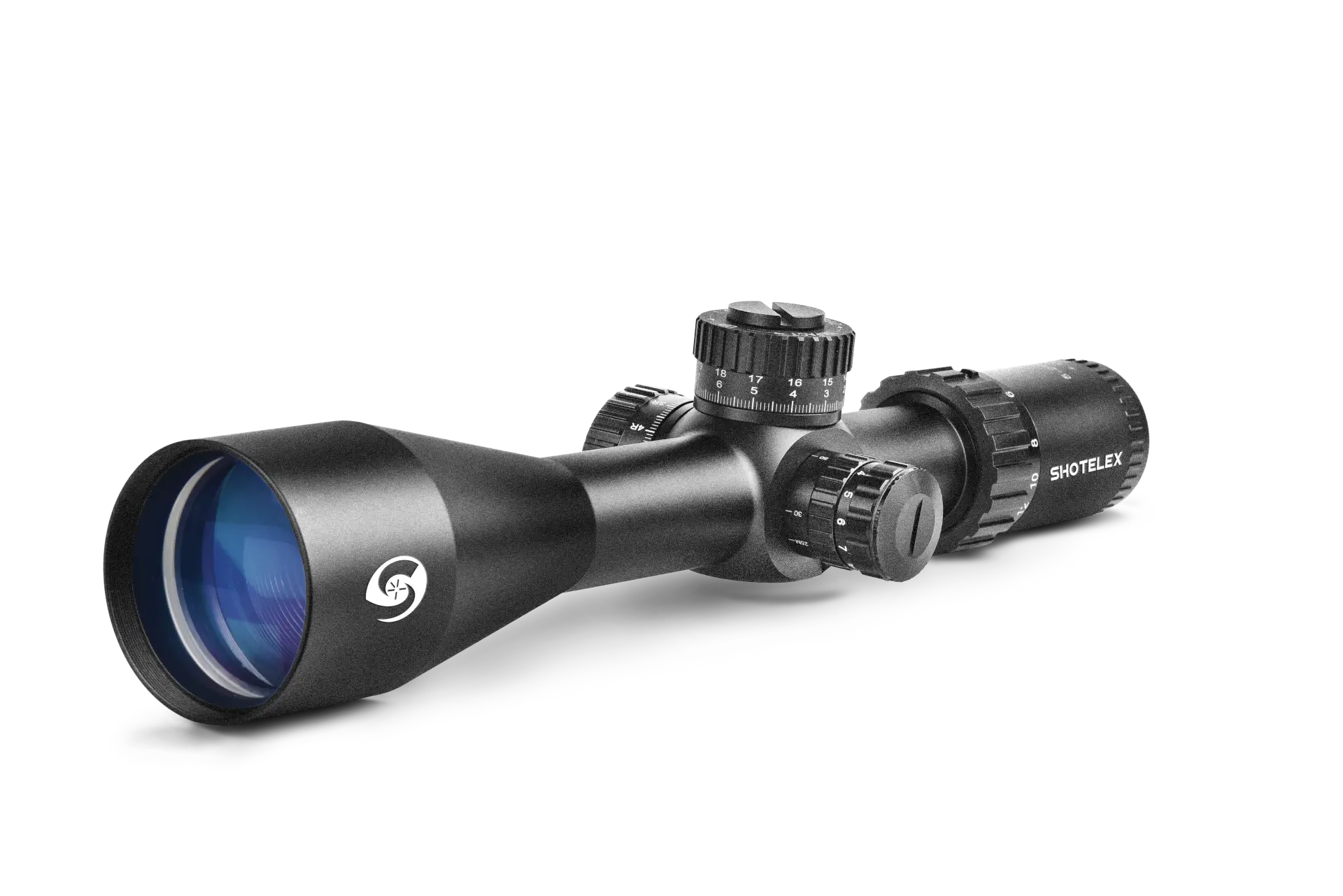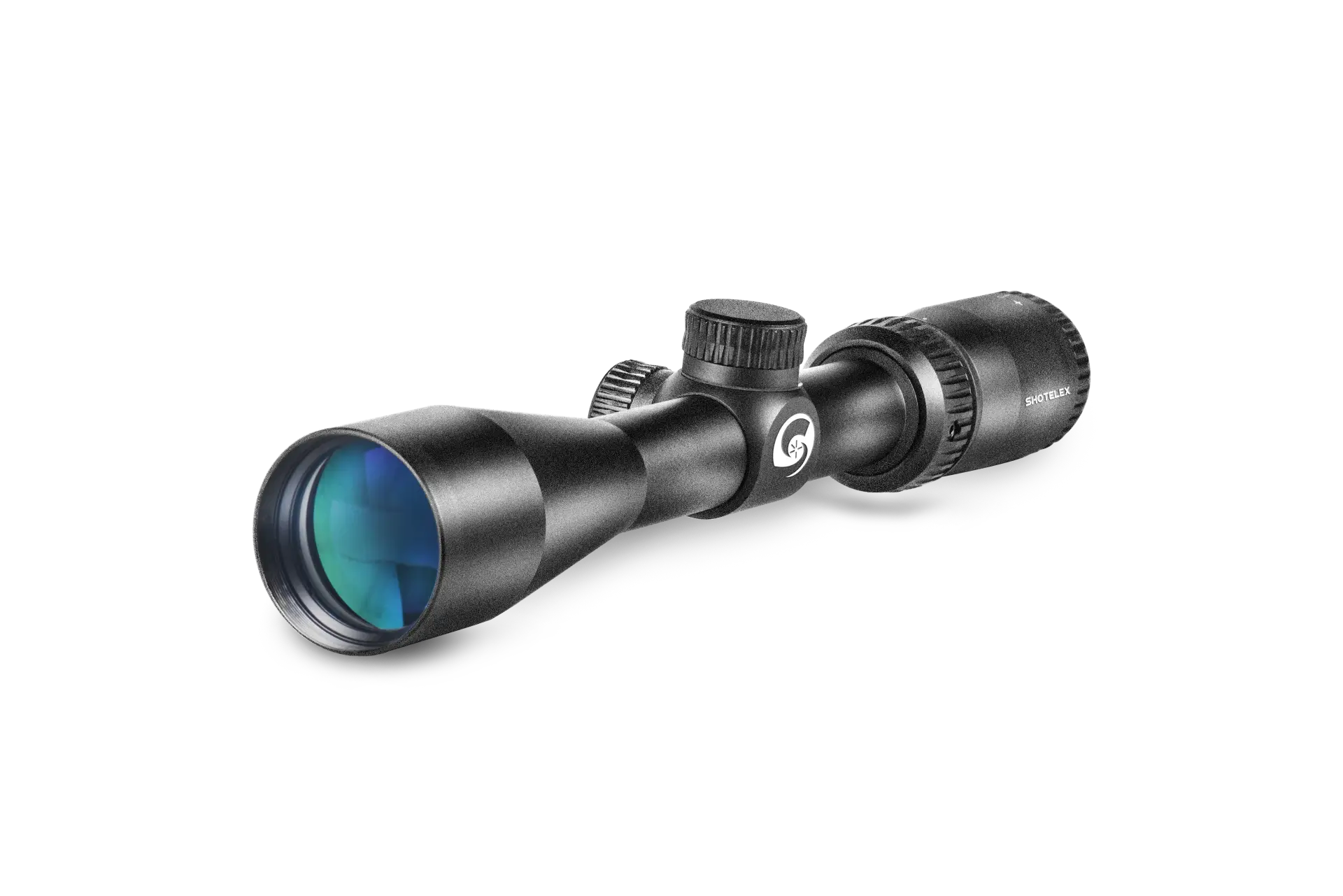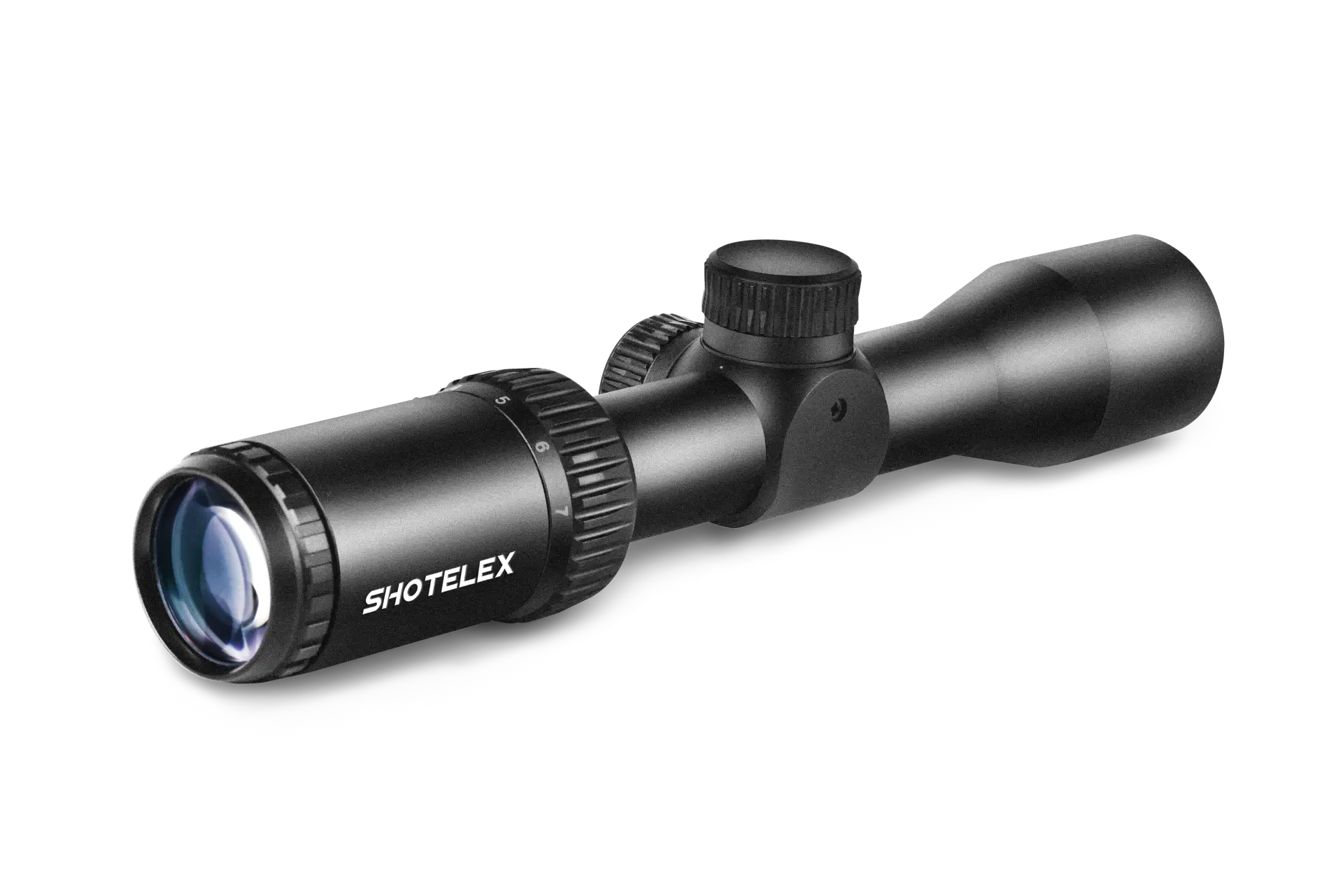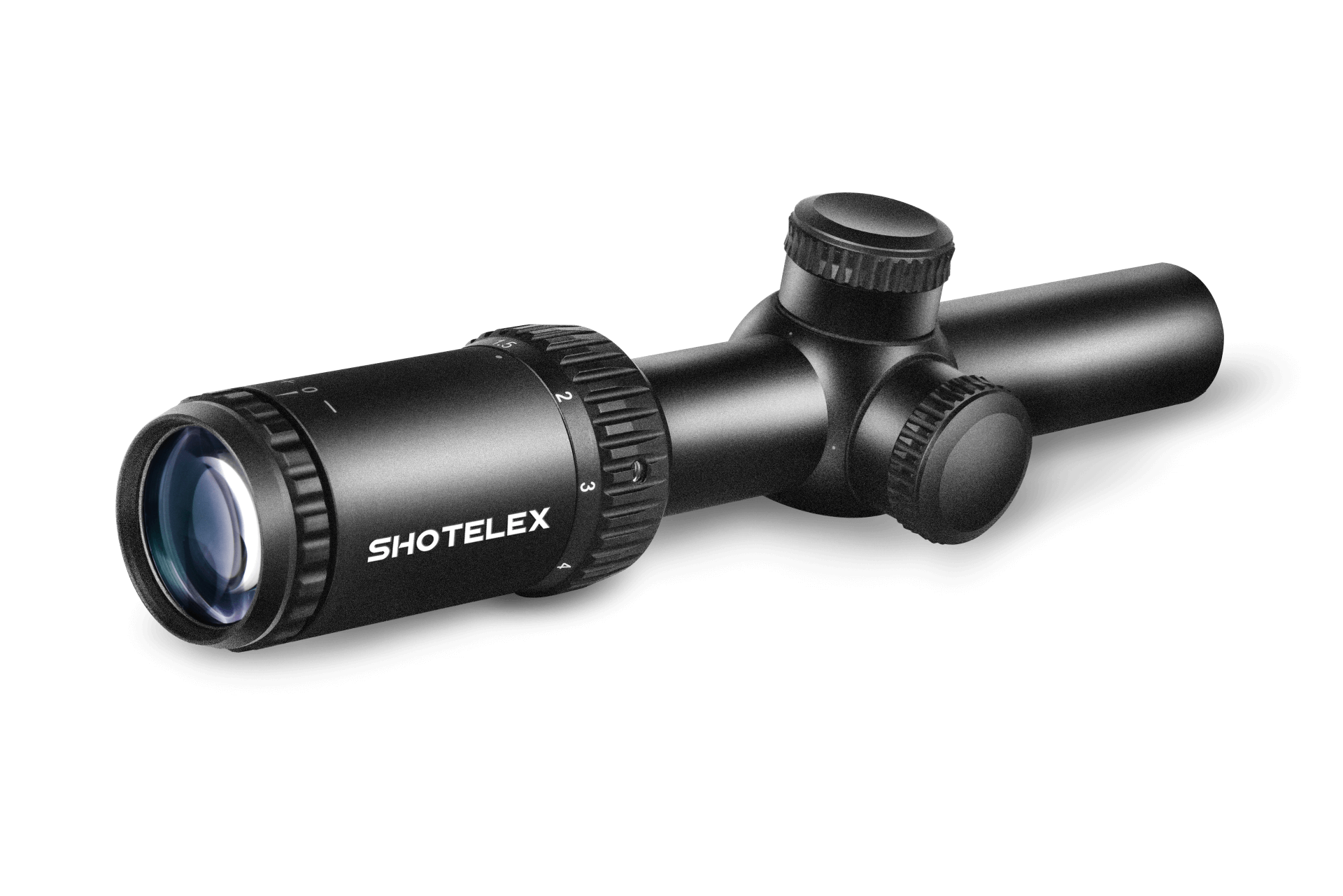What is a Rifle Scope?
A rifle scope is an advanced optical sighting device that is typically mounted on the top of a rifle. Its primary function is to enhance shooting accuracy by magnifying the target, allowing the shooter to see distant objects more clearly. This magnification allows for finer details and precision, making it easier to engage targets accurately, even at long ranges. A rifle scope also features a reticle, a set of crosshairs or aiming points, which assist the shooter in aligning their shot with greater precision than traditional iron sights. By providing both magnification and a clear point of reference for aiming, rifle scopes significantly improve the accuracy and effectiveness of shooters in various environments, whether for hunting, target shooting, or tactical operations.
Why Use a Scope on a Rifle?
- Low-Light Performance – Scopes with good light transmission help in dawn/dusk hunting.
- Better Accuracy – Especially at medium to long ranges.
- Target Identification– Easier to spot and confirm targets at a distance.
- Compensation for Bullet Drop – Some scopes have bullet drop compensator (BDC) reticles.
Key Components of a Rifle Scope
- Objective Lens – Gathers light and determines brightness (larger lenses offer better low-light performance).
- Ocular Lens (Eyepiece) – Where the shooter looks through; often adjustable for focus.
- Elevation Knob – Adjust the bullet’s impact point at different distances, works in tandem with the windage knob, often measured in MOA or MIL per click
- Erector Tube – is the internal assembly in a riflescope that controls reticle movement, magnification and zero adjustments. It’s a crucial part of how a scope maintains accuracy.
- 1st Focal Plane –In FFP scopes, the reticle is placed in front of the magnification lenses (within the erector tube). When you zoom in/out, the reticle grows or shrinks proportionally with the target
- 2nd Focal Plane – Unlike FFP, the reticle is placed after the magnification assembly (not inside the erector tube). When you zoom in/out, the reticle does not change size-only the target image does
- Windage – Windage refers to the horizontal (left-right) adjustment of a riflescope’s reticle, allowing you to compensate for bullet drift caused by wind or a misaligned scopes. It’s one of the two primary turret adjustments(along with elevation).
- Side Focus Knob – also called a parallax adjustment knob, It allows you to adjust the focus of the reticle(crosshair)and the target image at varying distances to eliminate parallax error and ensure a clear sight picture.
- Illumination Switch – It allows you to adjust the brightness of the illuminated reticle, improving visibility in low-light conditions.
- Diopter Ring – The diopter ring(diopter adjustment) fine-tunes the reticle’s sharpness to match your eyesight, ensuring a clear sight picture
- Zoom Ring –The zoom ring(or magnification ring) allows you to adjust magnification levels. It lets you switch between wide-field views(low power)and magnified target details(high power).

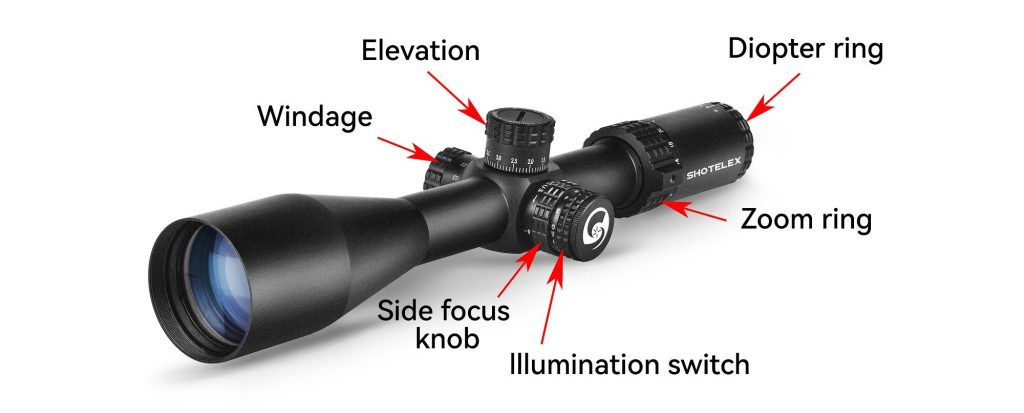
Common Types of Rifle Scopes
- Fixed Power – Budget-friendly, simple use | 4×32 (no zoom) |
- Variable Power –Versatility (hunting, tactical) | 3-9×40, 5-25×56 |
- Red Dot/Reflex – Close-range, fast targeting | Non-magnified quick shots |
- Tactical/Mil-Dot – Long-range precision | FFP scopes with mil adjustments |
- Night Vision – Low-light/no-light shooting | Digital or thermal optics |
Common Uses of Rifle Scopes
- Hunting (big game, varmints)
- Precision shooting (competitions, sniping)
- Tactical/Defensive applications

